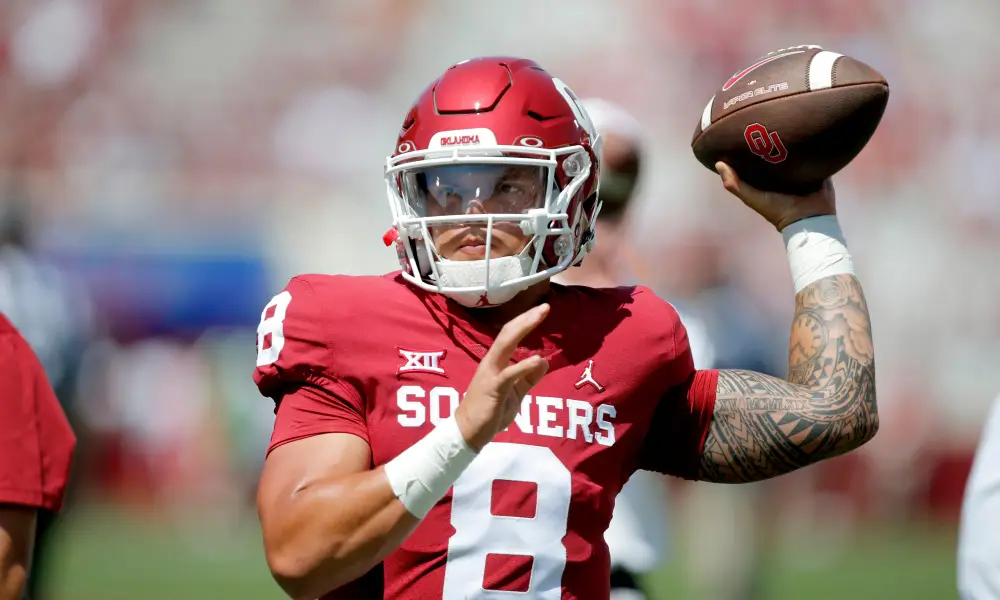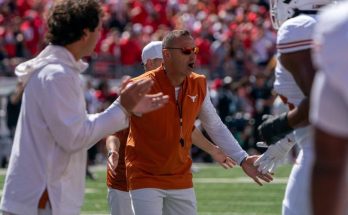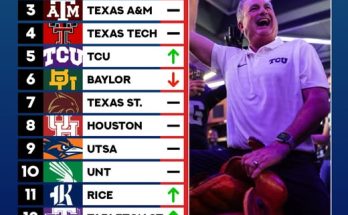National Championship Game Contenders: A Look at Oklahoma’s Historical Dominance
In the world of college football, few states have produced as many prominent contenders for the national championship as Oklahoma. With a rich football history that spans decades, Oklahoma has consistently delivered some of the most powerful and competitive teams in the sport. The state’s two major football programs—the University of Oklahoma (OU) and Oklahoma State University (OSU)—have contributed significantly to the national conversation about college football supremacy. However, it is the University of Oklahoma that has truly established itself as a perennial powerhouse in the quest for national titles.
While the college football landscape has evolved, with programs from all across the nation now vying for a spot in the prestigious College Football Playoff (CFP), the impact of Oklahoma’s teams cannot be understated. Both OU and OSU have been part of the narrative surrounding college football’s elite, consistently contending for national titles and representing the state of Oklahoma on the biggest stage in sports. Their legacies in the national championship game are a testament to the state’s unparalleled passion for football, its deep football culture, and the dedication of the athletes and coaches who have driven these programs to greatness.
The Rise of Oklahoma Football: A Legacy of Contenders
Oklahoma football’s history dates back over a century, but its prominence in the national spotlight really began to take shape under legendary coach Bud Wilkinson in the 1950s. Wilkinson led the Sooners to three national championships (1950, 1955, and 1956), making Oklahoma one of the most respected and feared programs in college football. Under Wilkinson, OU established its dominance, both in the Big Eight Conference and on the national stage.
However, it wasn’t until the 1970s, under the leadership of coach Barry Switzer, that Oklahoma cemented itself as a college football dynasty. Switzer’s Sooners were not only consistently competitive in the national rankings, but they were also known for their high-powered offenses and tough, relentless defenses. Oklahoma won three more national titles during the 1970s (1974, 1975, and 1985) and became known for its unmatched talent pool, including legendary players such as quarterback J.C. Watts, running back Billy Sims, and wide receiver Keith Jackson. Under Switzer, Oklahoma’s reputation for excellence grew, and the Sooners’ fierce style of play left an indelible mark on college football history.
Throughout the 1980s and 1990s, Oklahoma continued to be a contender, although the team’s success began to fluctuate as new powers emerged in college football. Nevertheless, the Sooners were always in the mix, and the program regained its national prominence in the early 2000s under the leadership of head coach Bob Stoops.
The Bob Stoops Era: Dominating the 2000s
Bob Stoops became the head coach of the University of Oklahoma in 1999, and his arrival marked the beginning of a new chapter of dominance for the Sooners. Stoops’ Sooners wasted no time in establishing themselves as a national contender, making a run at the national championship in just his second season. Oklahoma made an appearance in the BCS National Championship Game in 2000, where they defeated Florida State 13-2 to capture the national title. This victory was a statement win for Stoops and the Sooners, and it launched them into the national spotlight for years to come.
Under Stoops, Oklahoma consistently made appearances in major bowl games and remained a fixture in the national championship conversation throughout the 2000s. The Sooners went on to make appearances in the BCS National Championship Game in 2003 and 2008, though they fell short in both attempts. Despite these losses, Stoops’ success in leading Oklahoma to multiple conference championships and top-tier bowl appearances solidified the program’s position among the elite teams in college football.
The early 2000s were also marked by some of the most dynamic players in the country, including quarterbacks Josh Heupel, Jason White, and Sam Bradford, each of whom would go on to win the prestigious Heisman Trophy. These players were not only individually talented but were also a part of high-powered offenses that helped put Oklahoma on the map as a juggernaut in the college football world. Stoops’ leadership and ability to recruit top-tier talent helped maintain Oklahoma’s place as a contender year after year, laying the groundwork for the program’s continued success.
Oklahoma’s Role in the College Football Playoff Era
When the College Football Playoff (CFP) system was introduced in 2014, Oklahoma was quick to establish itself as a fixture in the new format. The CFP’s four-team playoff expanded the possibility for teams to compete for the national championship, and Oklahoma’s continued success under Stoops and his successor Lincoln Riley positioned the Sooners as one of the premier programs in college football during the CFP era.
Oklahoma’s first appearance in the College Football Playoff came in 2015, when the team earned a spot in the four-team field as a result of an impressive season that included a Big 12 Championship. The Sooners, led by quarterback Baker Mayfield, entered the playoff with high expectations, but they were eliminated by Clemson in the semifinals. Despite the early exit, the Sooners’ appearance in the playoff further solidified their standing as one of the top programs in the country.
In 2017, Oklahoma returned to the College Football Playoff with Mayfield at the helm, having led the team to another Big 12 Championship and a strong overall record. This time, the Sooners faced Georgia in an epic Rose Bowl semifinal. The game became one of the most thrilling contests in recent college football history, with Oklahoma ultimately losing in a heartbreaking 54-48 overtime decision. While the loss was devastating, it demonstrated the Sooners’ ability to compete at the highest level and reinforced the program’s place among the elite in college football.
Mayfield’s departure after the 2017 season did not diminish Oklahoma’s championship aspirations. In 2018, the Sooners were once again in the thick of the national title race, led by Heisman Trophy winner Kyler Murray. However, Oklahoma was once again eliminated in the semifinals, this time at the hands of Alabama. Despite their continued strong play, Oklahoma’s inability to capture a national championship in the CFP era left many wondering whether the program could finally take home the elusive title.
Oklahoma’s struggles in the playoff, particularly against powerhouse teams like Alabama and Clemson, have sparked debates over whether the Sooners can ever return to the top of the mountain. However, the Sooners’ consistent presence in the playoff picture proves that they remain a top-tier program, and it’s only a matter of time before they make another run at a national title.
The Oklahoma State Cowboys: A Contender on the Rise
While the University of Oklahoma has historically been the dominant force in the state, it’s important not to overlook the achievements of Oklahoma State University (OSU), which has also produced some outstanding football teams. The Oklahoma State Cowboys have a proud football tradition, and although they’ve yet to capture a national title, they have emerged as a competitive force in the Big 12 Conference in recent years.
Under head coach Mike Gundy, OSU has enjoyed tremendous success, including multiple 10-win seasons and Big 12 Championship appearances. While the Cowboys haven’t yet cracked the College Football Playoff, they’ve consistently been a contender in the conference and have earned invitations to major bowl games.
OSU’s success has been driven by a high-powered offense that features some of the most dynamic players in college football. Quarterbacks like Brandon Weeden, Mason Rudolph, and current star Spencer Sanders have helped elevate the program’s profile, while running backs like Barry Sanders (the Heisman Trophy winner in 1988) have cemented the team’s place in the annals of college football history. Gundy’s ability to develop talent and create a competitive team year after year has kept Oklahoma State in the conversation as a potential national championship contender.
While Oklahoma State has yet to make a splash in the national championship race, it’s clear that the Cowboys have the talent and coaching to potentially make a run at the title in the future. As the team continues to improve and develop, OSU may one day break through and establish itself as a force on the national stage, much like its counterpart in Norman.
Conclusion: Oklahoma’s National Championship Legacy
Both the University of Oklahoma and Oklahoma State University have played significant roles in shaping the landscape of college football. While Oklahoma has long been a fixture in the national championship picture, it’s clear that the state’s football programs have a rich history of producing contenders for the biggest prize in college sports.
From the dominance of Bud Wilkinson and Barry Switzer’s teams to the modern-day success of Bob Stoops, Lincoln Riley, and others, Oklahoma’s legacy in the college football world is undeniable. Though the Sooners have yet to claim a national championship in the College Football Playoff era, their consistent presence in the postseason and their championship pedigree remain a hallmark of the program’s success.
Meanwhile, Oklahoma State’s rise as a competitive force in the Big 12 Conference adds another layer of depth to the state’s football culture. As both schools continue to evolve and build upon their legacies, the future of Oklahoma football remains bright, and it’s only a matter of time before one of the state’s teams once again hoists the coveted national championship trophy.
Ultimately, Oklahoma’s dominance in the national championship race is a testament to the state’s passion for college football, its rich history of talent development, and its unwavering commitment to excellence. Whether it’s the Sooners or the Cowboys, the state of Oklahoma will always be a key player in the race for college football’s ultimate prize.



